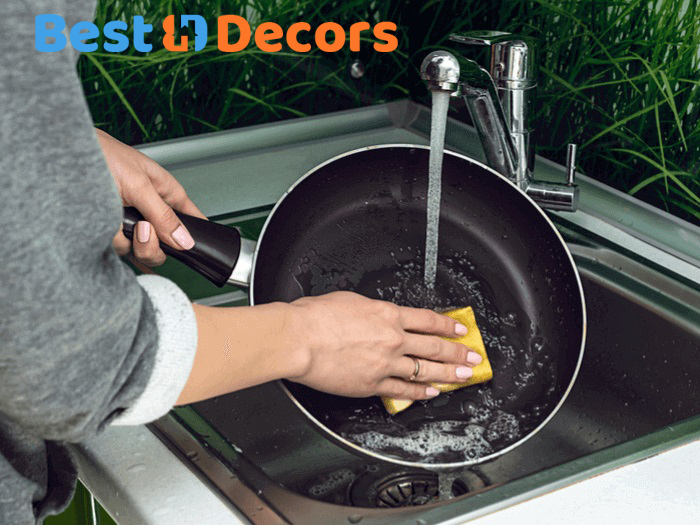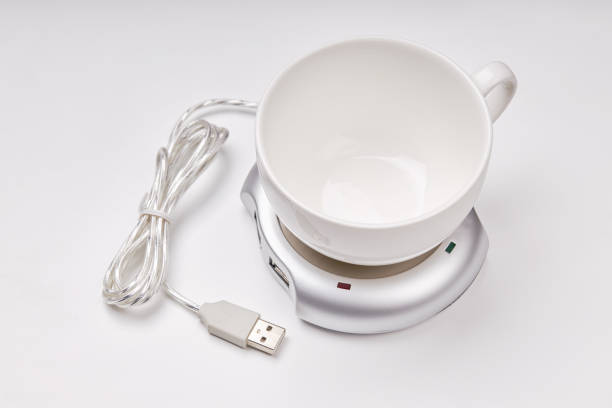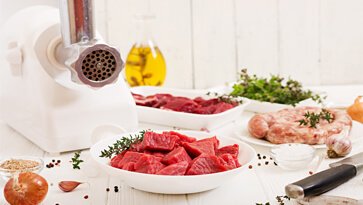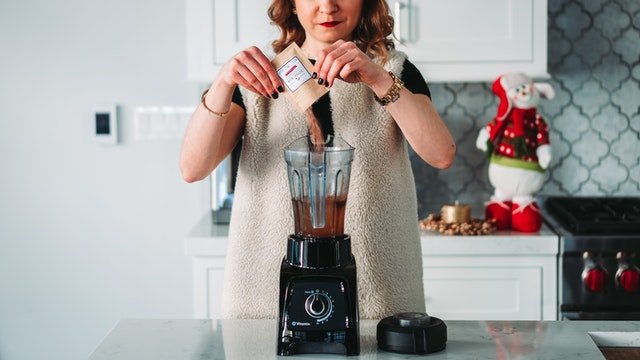Non-stick pans are a kitchen staple due to their convenience, ease of use, and ability to cook with minimal oil. However, many people are unsure about the proper way to clean a non-stick pan, especially when using it for the first time. Proper cleaning is crucial to maintaining the pan’s non-stick properties and extending its lifespan. In this guide, we’ll walk you through the best practices for cleaning your non-stick pan the first time and beyond, using safe and effective methods.
Why Proper Cleaning Matters
Cleaning your non-stick pan correctly from the start ensures that it remains in optimal condition. Non-stick pans are designed with a special coating that prevents food from sticking, but improper cleaning can damage this coating, leading to reduced performance and a shorter lifespan.
How to Clean a Non-Stick Pan for the First Time: Essential Tips
1. Start with a Gentle Hand Wash
Before using your non-stick pan for the first time, it’s important to wash it by hand.
- Step 1: Fill the pan with warm water and add a few drops of mild dish soap.
- Step 2: Use a soft sponge or cloth to gently wash the surface of the pan. Avoid using abrasive sponges or steel wool, as these can scratch the non-stick coating.
- Step 3: Rinse the pan thoroughly with warm water to remove all soap residue.
- Step 4: Dry the pan with a soft towel or let it air dry completely before storing or using it.
2. Cleaning Oil Residue Off a Non-Stick Pan
Over time, cooking oil can build up on the surface of a non-stick pan, leaving a sticky residue. To clean oil off a non-stick pan:
- Step 1: Mix equal parts white vinegar and water in the pan.
- Step 2: Bring the mixture to a simmer over medium heat.
- Step 3: Allow it to simmer for about 5-10 minutes to loosen the oil residue.
- Step 4: Remove the pan from the heat and let it cool slightly.
- Step 5: Pour out the vinegar mixture and wipe the pan clean with a soft cloth.
This method not only removes oil residue but also helps deodorize the pan, leaving it fresh and clean.
For more detailed information on the chemical properties of vinegar and its uses, visit Wikipedia’s page on vinegar.
3. Using Baking Soda for Tough Stains
Baking soda is a gentle yet effective cleaning agent that can help remove tough stains from your non-stick pan without damaging the surface.
- Step 1: Create a paste by mixing three parts baking soda with one part water.
- Step 2: Apply the paste to the stained areas of the pan.
- Step 3: Let it sit for 10-15 minutes to allow the baking soda to break down the stains.
- Step 4: Gently scrub the paste with a soft sponge in a circular motion.
- Step 5: Rinse the pan thoroughly with warm water and dry it with a towel.
This method is effective for removing stubborn food residues without scratching the non-stick coating.
4. Salt as a Natural Scrub
Salt can be used as a natural scrub to clean non-stick pans, especially for light stains and residues.
- Step 1: Sprinkle a generous amount of coarse salt onto the pan.
- Step 2: Use a soft cloth or sponge to gently rub the salt into the surface, focusing on stained areas.
- Step 3: Rinse the pan with warm water to remove the salt and any loosened residues.
- Step 4: Dry the pan thoroughly with a soft towel.
Be cautious when using salt, as vigorous scrubbing can potentially damage the non-stick coating. Use this method sparingly and with gentle pressure.
5. Dealing with Burnt-On Food
Burnt-on food can be particularly challenging to clean from non-stick pans, but it’s not impossible.
- Step 1: Fill the pan with warm water and a few drops of dish soap.
- Step 2: Let the pan soak for 20-30 minutes to soften the burnt food.
- Step 3: Use a soft sponge to gently scrub away the food residue.
- Step 4: If the residue persists, create a paste with baking soda and water, apply it to the area, and let it sit for 10-15 minutes before scrubbing again.
Regular maintenance and prompt cleaning after each use can prevent food from burning onto the pan’s surface, making future cleaning easier.
6. Bar Keepers Friend for Deep Cleaning
Bar Keepers Friend is a popular cleaning product that can be used for deep cleaning non-stick pans, especially if they’ve been neglected for a while.
- Step 1: Apply a small amount of Bar Keepers Friend to the pan’s surface.
- Step 2: Use a soft, damp cloth to gently scrub the pan in a circular motion.
- Step 3: Rinse the pan thoroughly with warm water to remove all cleaning residue.
- Step 4: Dry the pan with a soft towel.
This cleaner is effective for removing tough stains and restoring the pan’s original appearance. However, use it sparingly and with care to avoid damaging the non-stick coating.
7. Hydrogen Peroxide for Stubborn Stains
Hydrogen peroxide can be used to tackle particularly stubborn stains on non-stick pans.
- Step 1: Pour a small amount of hydrogen peroxide into the pan.
- Step 2: Heat the pan on low until the hydrogen peroxide begins to simmer.
- Step 3: Let it simmer for about 10 minutes, then remove the pan from the heat.
- Step 4: Use a soft sponge to scrub the stained area.
- Step 5: Rinse the pan thoroughly and dry it with a towel.
Be aware that hydrogen peroxide has a strong smell when heated, but it’s effective at breaking down tough residues.
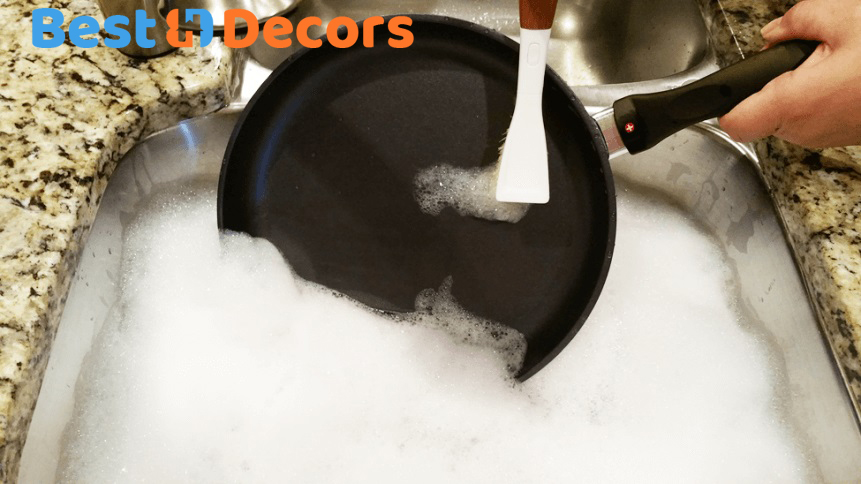
FAQ Section
1. How often should I clean my non-stick pan?
It’s best to clean your non-stick pan after each use to prevent food residues from building up and to maintain the pan’s non-stick properties.
2. Can I put my non-stick pan in the dishwasher?
While some non-stick pans are labeled as dishwasher-safe, it’s generally better to wash them by hand to preserve the non-stick coating.
3. Why does my non-stick pan have a sticky residue?
Sticky residue can result from oil buildup over time. Regular cleaning with vinegar or baking soda can help prevent and remove this residue.
4. Is it safe to use metal utensils on a non-stick pan?
No, metal utensils can scratch and damage the non-stick coating. Use wooden, silicone, or plastic utensils instead.
5. How can I prevent my non-stick pan from losing its coating?
Avoid using high heat, metal utensils, and abrasive cleaners. Regular, gentle cleaning and proper storage can help maintain the pan’s coating.
Conclusion
Cleaning your non-stick pan properly from the first use is essential to preserving its performance and longevity. By following the methods outlined in this guide, you can keep your pan in top condition, ensuring it serves you well for years to come. Whether you’re dealing with light residues, burnt-on food, or just want to give your pan a deep clean, these techniques will help you maintain a non-stick surface that’s as good as new.
Remember, taking care of your non-stick pan with gentle cleaning practices will reduce the need for aggressive methods, keeping your cookware in pristine condition. Always avoid harsh scrubbing, and when in doubt, opt for natural cleaning solutions like vinegar and baking soda to protect your investment.
For more tips on maintaining your kitchen cookware, be sure to check out our article on the best non-stick copper cookware.


